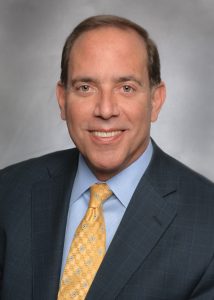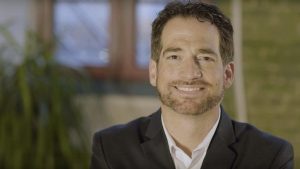TAKING A LONG TERM VIEW
The security sector is growing – nobody can argue that. With estimates pushing the 290 Billion USD mark by 2025, it is difficult to argue that opportunities do not exist. With frontline security guarding/services estimated at more than two-thirds of that figure, the question that security business owners should be reflecting on is: how do I position myself to take advantage of that market, that growth, in short, that opportunity.
The reality is that today much of the market is being served by business focused on supplying guards to fill a schedule. There is an opportunity for businesses to get beyond HPW – hours per week. Security shifting in the direction whereby guards are deployed in advanced security markets and are performing more higher value-added security measures. Not only having guards show up as a schedule requires, but also bringing with them measurable data.
Security service companies are not solely to blame for this restricted view of their potential. Clients contribute to the issue as well. Consider where “lowest technically acceptable bid” (LTAB) reign, often under the guidance of strict purchasing rules. It is very obvious that this encourages doing as little as possible as opposed to exploring potential. In markets where qualified staff are hard to source, this pressure is exponential when security officers are being viewed as a commodity, with price being the key factor distinguishing providers. This becomes a problem that spirals out of control and spills over into other areas such as not developing talent, retaining qualified officers.
Solutions can be found in getting clients to understand that there is a need to have a strategic understanding of security. Forward thinking companies understand that security has to bring value to their organisation. For instance, Microsoft has Global Security Strategy and Diplomacy Team focused on driving strategic change to advance security and resilience in a way that addresses challenges such as risk management, incident response, emergency comms & information sharing.
The transition from the bad of today to the potential of tomorrow happens when businesses truly grasp the understanding that they are offering a “peace of mind” service to their clients. In other words: if something happens we are there and we can respond, escalate and manage a situation.
For an interesting down the road view of the future of security services consider the idea of return on data (ROD). The data in question is the information that security teams can generate and act upon to provide for secure environments.
Security companies need to develop a data strategy if they wish to run intelligently. This is evidenced by the Microsoft Accenture survey which revealed that 83% of the top investments that security leaders are looking to make within the next 3-5 years are on big data and analytics.
What are the benefits they are looking to gain? A recent survey by Brivo revealed that among the top-2 benefits are ways to improve policies and procedures at 62%, investigate suspicious behaviour at 37% and seeking compliance support at 27%. The challenge in this area remains companies using decentralised security platforms (which limit efficiency and scalability).
Delivering more is the goal. The idea of using technology that drives an impact (not just tech for tech’s sake) is key. This entails using technology that solves everyday issues: i.e. that gets the right staff to a client’s site, runs operations smoothly while being fully equipped to drive value to the client organisation (and in turn drive your client retention numbers!).
Consider the pain-point of the lack of understanding of current solutions in the market. The aforementioned Microsoft Accenture report revealed that more than half of the respondents believe that there is both clear ROI and non-financial benefits to the digital transformation. Digitization and automation can improve operational efficiency up to 30-50% (contingent on rollout and organisation size).
In a study that TrackTik did in 2016, it was concluded that 93% of end-user clients want their service providers to provide concrete statistics relating to completion of Service Level Agreements (SLAs). This will support retention and will also support differentiation and the professionalisation of your security services.
There is some low hanging fruit in the quest for digital transformation as a clear way to improve efficiencies. Current security business models will probably become obsolete within the next couple of years. This means that adopting technology and varying service models is a matter of survival at this point with 35% of C-level executives indicating that it is important and urgent in security.
We see industry leaders growing- whether that be by acquisition or by organic growth or a mixture of both. The certainty is that those poised for long-term success are doing so by embracing technology and the opportunities presented by digitisation. They are able to offer the peace of mind that their clients are asking for.


 Shaun Kelly joined Tolman & Wiker Insurance Services in 2005. He specializes in all lines of property and casualty insurance for industries including contract security firms, agriculture, construction, oil and gas. Shaun received a BS in Business Administration with a major in Finance from California State University in Fresno, California. He is an active member of several industry associations, including the Association CALSAGA, the Kern County Builders Exchange and the Independent Insurance Agents of Kern County. Shaun can be reached at 661-616-4700 or skelly@tolmanandwiker.com.
Shaun Kelly joined Tolman & Wiker Insurance Services in 2005. He specializes in all lines of property and casualty insurance for industries including contract security firms, agriculture, construction, oil and gas. Shaun received a BS in Business Administration with a major in Finance from California State University in Fresno, California. He is an active member of several industry associations, including the Association CALSAGA, the Kern County Builders Exchange and the Independent Insurance Agents of Kern County. Shaun can be reached at 661-616-4700 or skelly@tolmanandwiker.com.
 Now KPIs come in a slew of varieties. Today, let’s focus on those related to your field service operation. So let us assume that the fact-finding questions you ask about your client’s needs, assets, risk profile, etc., lead you to this conclusion: Onsite guards and mobile guard patrols are part of a cost-effective solution to the client’s situation.
Now KPIs come in a slew of varieties. Today, let’s focus on those related to your field service operation. So let us assume that the fact-finding questions you ask about your client’s needs, assets, risk profile, etc., lead you to this conclusion: Onsite guards and mobile guard patrols are part of a cost-effective solution to the client’s situation. If you wish to identify other KPIs specific to your business, ensure that the objectives are SMART (Specific, Measurable, Attainable, Relevant and Time-sensitive). Keep in mind that less is more. Having too many KPIs can be difficult to manage and lead to more confusion.
If you wish to identify other KPIs specific to your business, ensure that the objectives are SMART (Specific, Measurable, Attainable, Relevant and Time-sensitive). Keep in mind that less is more. Having too many KPIs can be difficult to manage and lead to more confusion.